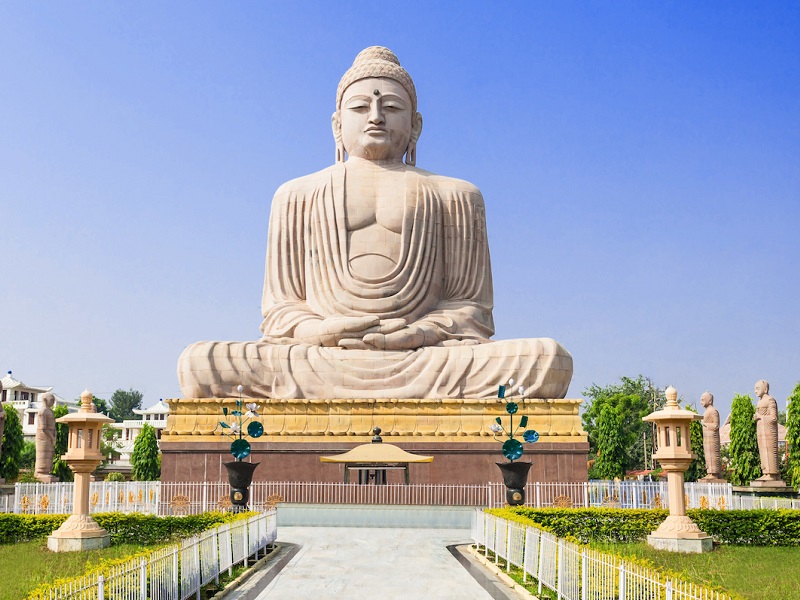In religion and spirituality, a pilgrimage is a journey to a sacred place or a shrine of importance to a person’s beliefs and faith. Members of every major religion participate in pilgrimages. Like all religions, the diverse country of India, where Buddhism originated has rich memories of the Buddhist legacy. Buddhism offers four primary sites of pilgrimage- Lumbini – the birthplace of the Buddha, Bodh Gaya- the site where the Buddha attained enlightenment, Sarnath – the location of the Buddha’s first sermon, and Kushinagar- the location where the Buddha attained parinirvana. Popularly called Buddhist Circuits, all of these sites are located in India except Lumbini, which is in southern Nepal. Check our blog here to visit all these Buddhist circuits and discover the path to enlightenment, towards Buddha as part of India tour packages.
Bihar Buddhist Circuit
Bodhgaya
Bodhgaya is the sacred and holiest among all Buddhist sites in India. It is the place where Lord Gautam Buddha attained enlightenment under a Bodhi Tree. Known for its Mahabodhi Temple complex, it is one of the earliest Buddhist pilgrimage sites in India and among the UNESCO World Heritage sites in India. Established during the reign of Ashoka in the 3rd century BC, the place attracts thousands of tourists throughout the year. Apart, some of the popular places to visit in Bodhgaya are Wat Thai Buddhagaya, Thai Monastery, Japanese Temple, Muchalinda Lake, Vishnupad Temple, Dungeshwari Hills, Sujatha Temple, etc., as part of Bodhgaya Tour Packages.
Rajgir
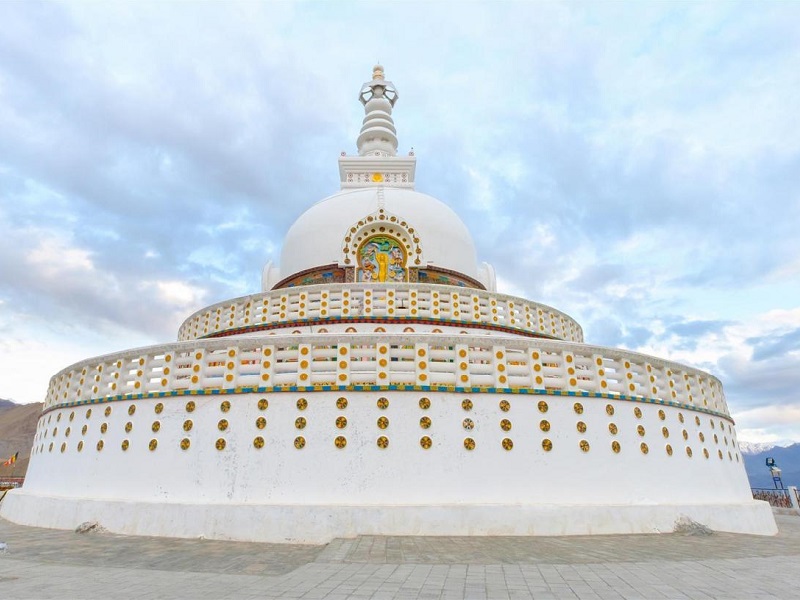
Rajgir is another popular pilgrimage sites for Buddhists in Bihar and among the must include places in the Buddhist Circuit of India. It is the place that is associated with both Jainism and Buddhism as it was the place where Lord Mahavira and Lord Buddha taught their beliefs during the 6th and 5th centuries BC. After Buddha’s death, his disciples held their first Buddhist Council in the cave of Saptparni. Placed in a lush green valley and surrounded by rocky hills, Rajgir is a mystical town blessed with natural serenity in the form of dense forests, mysterious caves, and springs. Some of the prime places to visit in Rajgir are Griddhakuta Peak, Venu Van, Bimbisar Jail, Ghora Katora Lake, Swarna Bhandar, The Cyclopean Wall, Vishwa Shanti Stupa, Veerayatam Museum, Rajgir Hot Springs, Ajatshatru Fort, etc., as part of Rajgir Tour Packages.
Nalanda
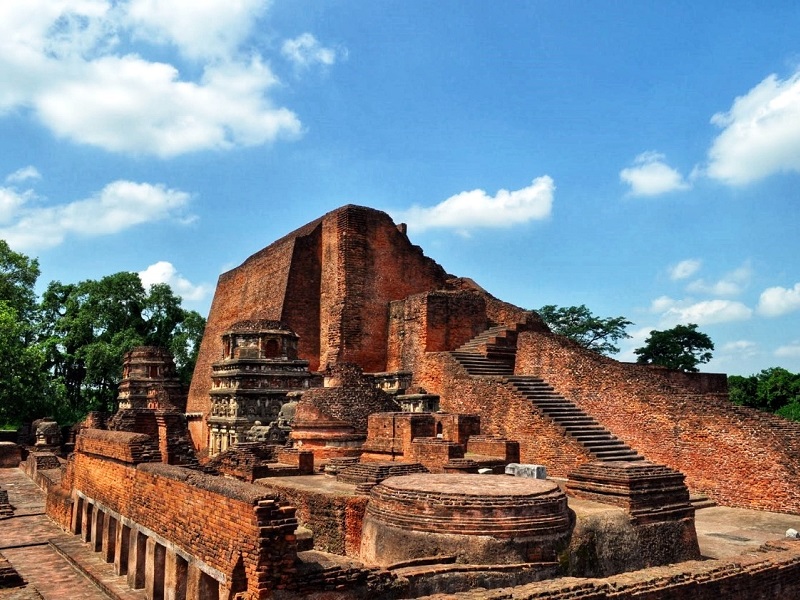
Another popular Buddhist site in Bihar, Nalanda is an ancient city and among the must include places in the Buddhist Circuit of India. Constructed in the 5th century AD, Nalanda is said to be one of the world’s oldest universities that attracted students from far and wide. Today, it is one of the popular places to visit in Bihar and is the second world heritage site recognized by UNESCO in Bihar after Bodhgaya. It is said that Gautama Buddha delivered lectures in this region and one of his two chief disciples, Sariputra, was born in this region. Spread over an area of 14 hectares, the ruin of Nalanda comprises of several monuments like Stupa of Sariputta, Surya Temple, Nalanda Museum, and Nav Nalanda Vihar that are the popular places to visit in Nalanda.
Vaishali
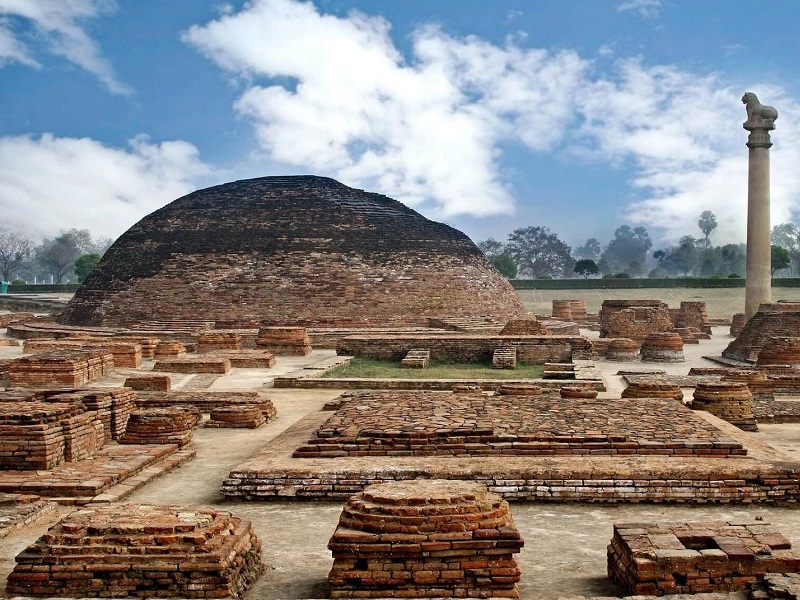
Vaishali is another sacred place for Buddhist in India located in Bihar. It is one of the popular places to visit in Bihar and among the must include places in the Buddhist Circuit of India. Vaishali is the place where Gautama Buddha preached his last sermon before his death in 483 BC. Later in 383 BC, the Second Buddhist council was convened here by King Kalasoka, making it an important place in both Jain and Buddhist religions. Also, Vaishali is revered as a holy place by Jains as it is the city where Lord Mahavir was born. Some of the popular places to visit in Vaishali include Vishwa Shanti Stupa, Chaumuki Mahadev, Bawan Pokhar Temple, Ashoka Pillar, Ramchaura Temple, Vaishali Museum etc., as part of Vaishali Tour Packages. Apart, it is also known as the land of Amrapali, the great Indian dancer who related to many folktales.
UP Buddhist Circuit
Sarnath
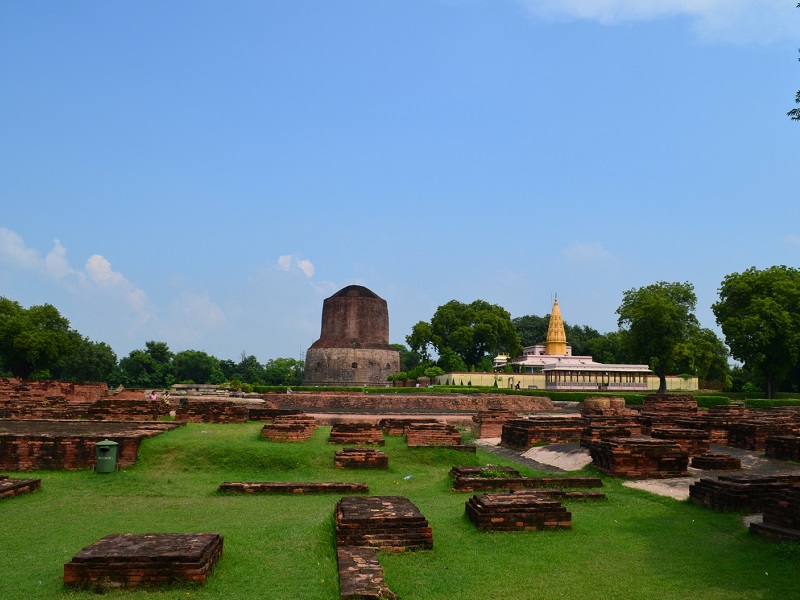
Sarnath is a revered Buddhist pilgrimage center located in the Varanasi district of Uttar Pradesh. Situated at the confluence of Ganga and Varuna Rivers, Sarnath is one of the four most important Buddhist pilgrimage centers of India, the other three being Lumbini, Bodh Gaya, and Kushinagar. Also known as Ishipatna, and Mrigadaya, it is one of the must include places in places in the Buddhist Circuit of India. Sarnath is the place where Buddha delivered his first sermon to his five disciples after attaining enlightenment at Bodh Gaya. Ashoka Pillar, Deer Park, Dhamek Stupa, Mulagandha Kuti Vihar, the Chaukhandi Stupa, Thai Monastery, Chinese Temple, Archaeological Museum, Japanese Temple, and Tibetan Temple are some of the popular places to visit in Sarnath as part of Varanasi Tour Packages.
Shravasti
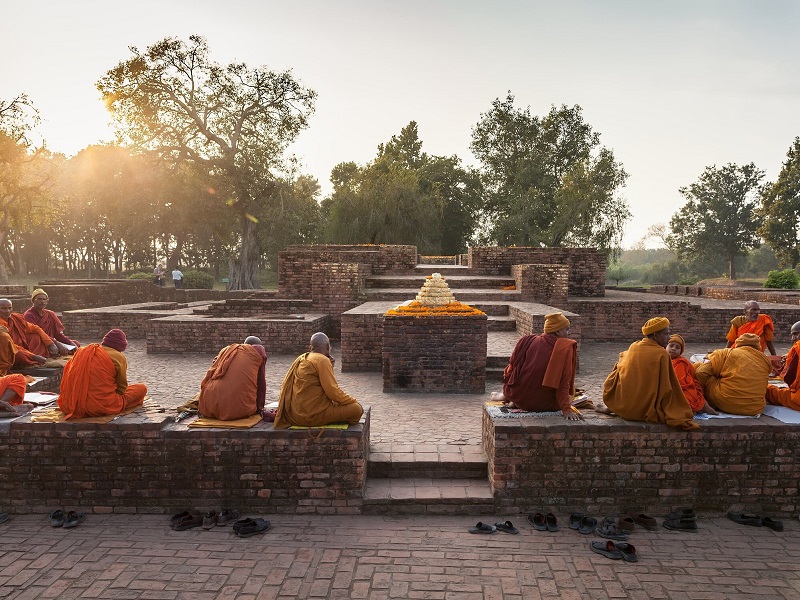
Shravasti is another Buddhist site and ancient historical city located in the northeastern state of Uttar Pradesh. Situated on the banks of the West Rapti River, it is one of the must include places in the Buddhist Circuit of India and among the best places to visit in Uttar Pradesh. Shravasti was one of the six largest cities in ancient India and is closely associated with the life of Gautama Buddha, who is believed to have spent 25 rainy seasons here. Also, it is an important center for the believers of Jainism since the Sobhanath temple is believed to be the birthplace of Tirthankara Sambhavanath of Jainism. Besides, Sobhanath Temple, Angulimala Stupa, Anathapindika Stupa, Jetavana Monastery, Vibhuti Nath Temple, etc. Apart from these, one can also visit Buddhist monasteries built by Thailand, South Korea, Sri Lanka, Myanmar, Tibet, and China here.
Kushinagar
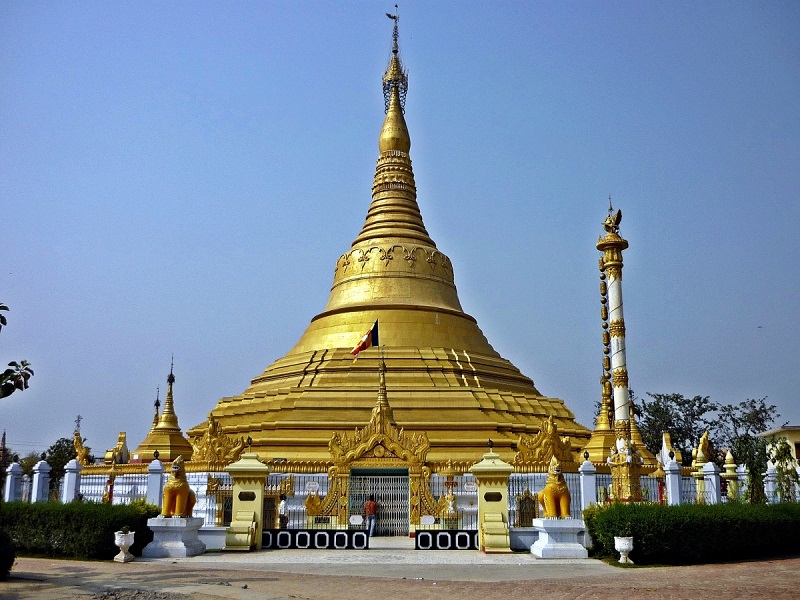
Kushinagar is one of the prominent places of Buddhist Pilgrimage in India and among the top places to visit in Uttar Pradesh. Also known as Kasia, Kushinagar is the place where Gautama Buddha attained Mahaparinirvana (salvation) in 483 BC and was cremated at Rambhar Stupa. It is believed that after Lord Buddha’s parinirvana, emperor Ashoka built a stupa here to mark the parinirvana site. Besides, it is an international Buddhist pilgrimage center, and the followers of Buddhism, especially from Asian countries, wish to visit this place at least once in their lifetime. Japanese Temple, Ramabhar Stupa, Buddha Museum, Wat Thai Temple, Matha Kuar Shrine, Kushinagar Museum, etc., are some of the popular places to visit in Kushinagar as part of Kushinagar Tour.
Sanchi Group
Sanchi
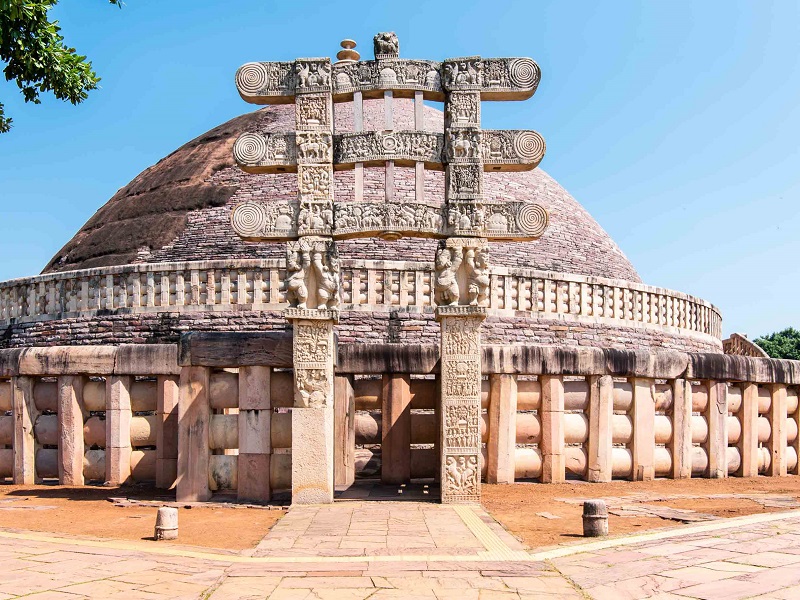
Sanchi is a historical town in Madhya Pradesh which is famous worldwide for its Buddhist monuments. Most of the monuments are well preserved, including the stunning & beautiful Stupa which is well known as Sanchi Stupa.
Sanchi is the center of a region with vast collection of age-old stupas, monasteries, temples, monolithic pillars, and other remnants of the Buddhist era. The series of Buddhist monuments date from the Maurya Empire period (3rd century BCE), continuing with the Gupta Empire period (5th century CE), and ending around the 12th century CE. The sculptures and monuments present at the site are probably the best-preserved group of Buddhist monuments in India, and among the must-include historical places in Madhya Pradesh.
Maharashtra Buddhist Circuit
Ellora
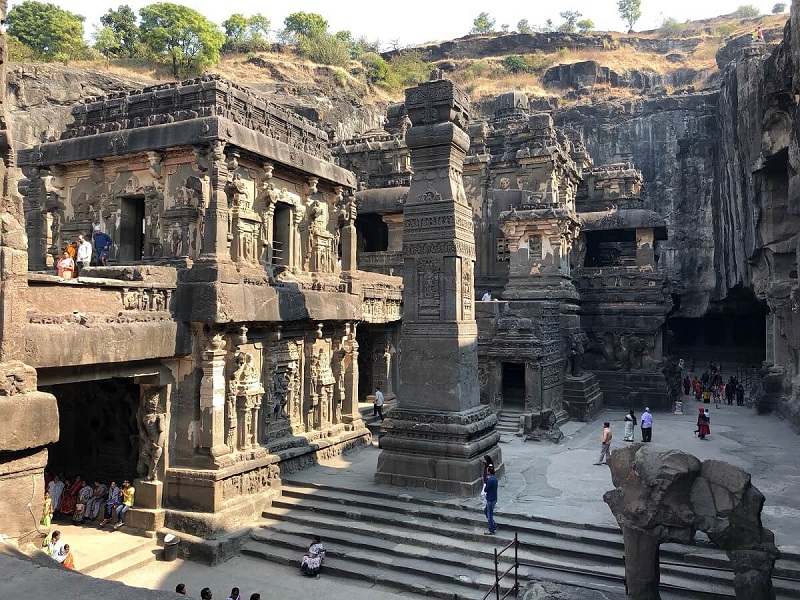
Overlooking the Waghur River, the Ellora Cave Complex comprises of 34 caves that were hewn out of solid rocks of the Charanandri hills between the 6th and 10th centuries AD. It is the most visited Buddhist sites in Maharashtra, and among the top tourist places in Maharashtra. The complex consists of 29 rock-cut caves in which 12 are Buddhist caves, 17 are Hindu caves, and 5 are Jain Caves. Kailash Temple (Cave16) is the main highlight of Ellora with its stupendous piece of architecture, interesting spatial effects, and grand sculptures. Though all the caves are interesting to visit, Caves 1, 2, 16, 17, 19 and 26 are top places to visit in Ellora Caves as part of Maharashtra Tour Packages.
Ajanta Caves
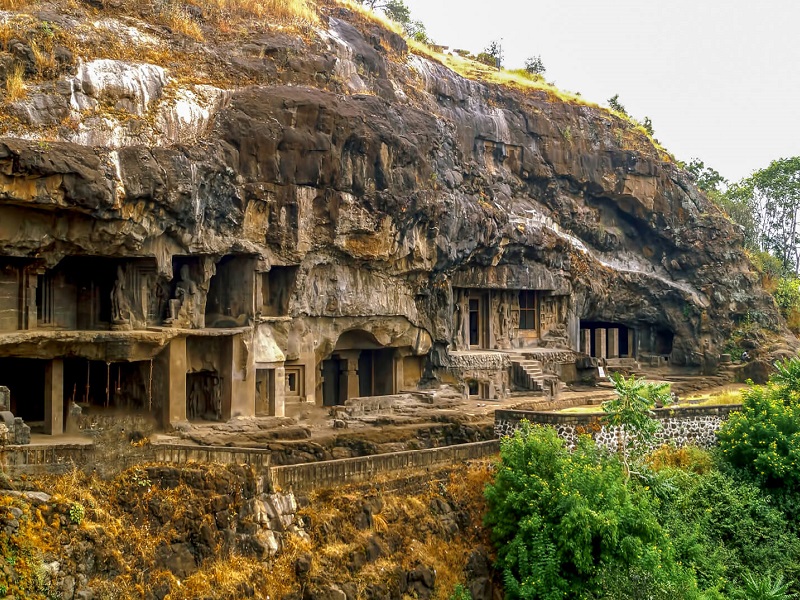
A UNESCO World Heritage Sites, Ajanta Caves are an epitome of stunning cave architecture in India located in Maharashtra. Ajanta Caves are a group of 30 rock-cut Buddhist cave monuments that were built between 2nd century BCE and 650 CE, the caves at Ajanta are one of the famous Buddhist monuments in India, and among the most visited heritage sites in Maharashtra. The caves of Ajanta were built in two phases according to history scholar Walter M. Spink. Caves 9, 10, 12, 13, and 15A were built in the first phase during the Satavahana dynasty and they belong to the Hinayana sect of Buddhism while the second period of construction was carried out during the rule of Emperor Harisena of the Vakataka dynasty. Representing both Theravada and Mahayana Buddhist traditions, the rock-cut caves have spectacular paintings that depict the rebirths of Buddha and many Jataka Tales. Though all the caves are interesting, Caves 1, 2, 16, 17, 19 and 26 are top places to visit in Ajanta.
Elephanta Caves
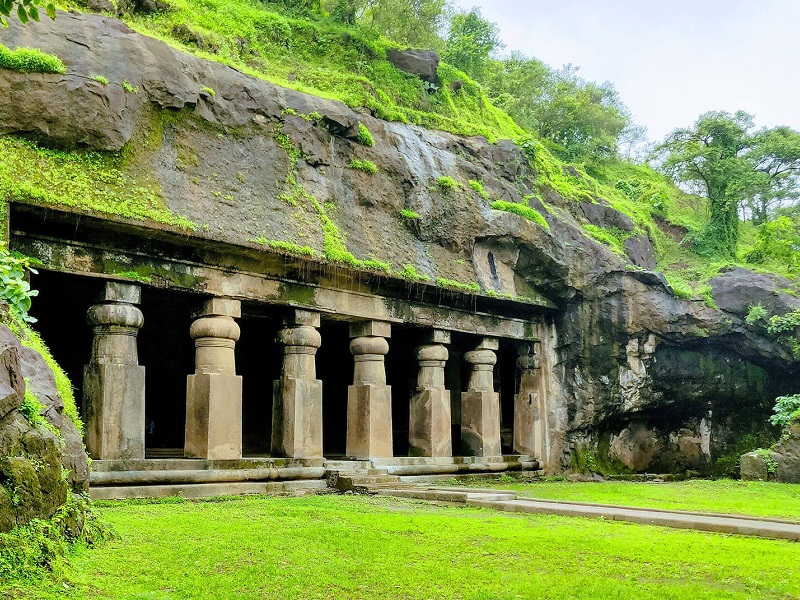
After Ajanta or Ellora Caves, the seven ancient rock-cut caves on Elephanta Island are the most famous caves in India and popular heritage sites in Maharashtra. Designated as a UNESCO World Heritage Site in 1987, it is one of the must visit Buddhist sites in Maharashtra and among the popular places to visit in Mumbai tour packages. Elephanta Island is home to two groups of rock-cut caves carved between the 5th and 8th centuries. The five caves sited on the western hills of the Island are dedicated to the Hindu sect Shaiva and several Hindu sculptures are chiseled in these caves. Some of the popular sculptures of Hindu caves are Ravana holding up the Kailash, Shiva-Parvati on Kailash, Ardhanarishvara, Trimurti, Wedding of Shiva, Linga, Nataraja, Kartikeya, Yogishvara, and Matrikas. In second group of caves, numerous Buddhist sculptures can be seen depicting various pictures of Gautama Buddha and Jataka Tales.
Nashik
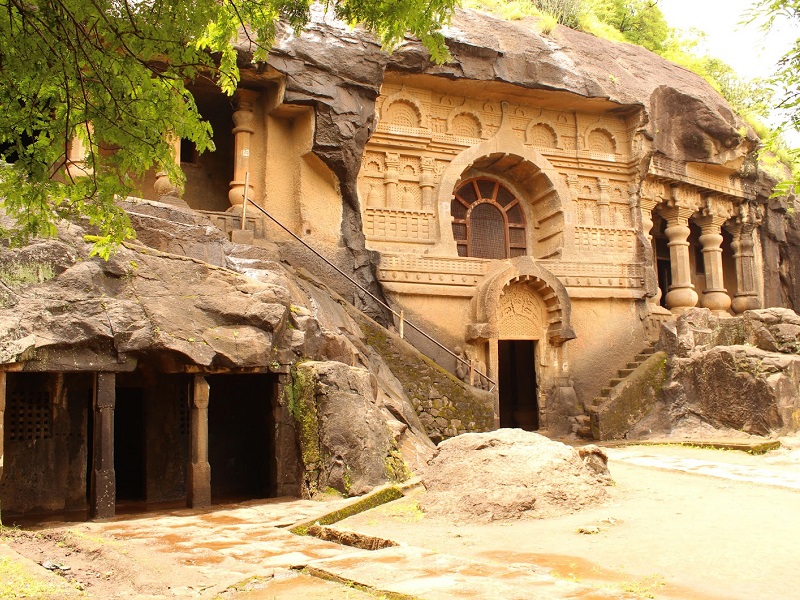
Situated on the banks of River Godavari, Nashik or Nasik is a religious city and among the must visit Buddhist sites in Maharashtra. Nashik is one of the popular places of pilgrimage in Maharashtra, and among the must-include places in Maharashtra Tour Packages. Pandavleni Caves or Trirashmi Caves in Nashik are the ancient rock cut caves and is a holy Buddhist site in Maharashtra. Carved between the 3rd century and the 2nd century AD, Pandavleni Caves are a group of 24 caves representing the Hinayana Buddhism. Caves 3, 10, 18 and 20 are the most significant and fascinating caves among the 24 caves which are noted for their magnificent sculptures. Also, there are several inscriptions found in these caves in which Cave 15 – ‘Sri Yajna Vihar’ inscription mentions Sri Yajna Satakarni, the last powerful Satvahana King who ruled over the western Maharashtra. The other inscriptions note the names Bhattapalika, Gautamiputra Satakarni, Vashishthiputra Pulumavi of the Satavahanas and two of the Kshatrapas, Dakshamitra and Ushavadant.
Featured Source



